One Degree North of the Equator
Moving and Living Abroad in Asia
Article and photos by Kathryn Cullen
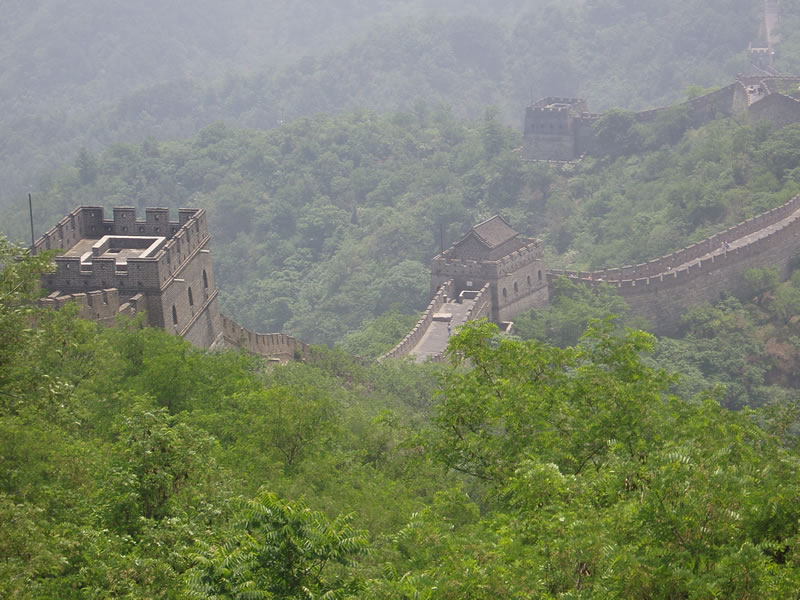 |
| A section of the Great Wall of China. |
My family and I had a decision to make. My husband's pharmaceutical company agreed with the Singapore government to assemble a laboratory on the island. They needed a scientist to set it up.
At first, my husband and I only talked privately about moving. Would this be good for our family? Could we live on an island of five million people in the tropics? Eventually, we shared the idea with our children. Often at the dinner table, we imagined and researched this smaller-than-San-Diego-County island. We increasingly liked the idea, so my husband and I flew to Singapore on a scouting mission.
We investigated schools and places to live and did our best to visualize living 8,000 miles away from home. We spent days walking through downtown Singapore and visiting steamy, green parks. We ate dim sum and pepper crab. Impressed and intrigued by the diversity and lifestyle of Singapore, we decided to go for it.
I wasn't afraid to move so far away. I saw a unique opportunity. Live in a new country? Experience a new culture? I was all in. We lived in Southern California and had a full life — good friends and family nearby. I've often looked back at our sweet life and wondered how we could have chosen to leave it behind. Perhaps sheer satisfaction and contentment enabled me to go. I felt confident and ready for an adventure.
There was so much to do: quit our jobs, rent the house, and sell our cars. And then there were all the decisions to make. What to take with us? What to leave behind? Should we store our things until we return? We were still determining what we were doing and how long we'd be gone. Frankly, the end wasn't even in sight while we prepared to move. The move was too much work to justify leaving for just one year.
One by one, my keys disappeared. I resigned from my job and sold my car. Tenants signed a lease to live in our home. I can still see the rented green van sitting in our driveway. We had eight large pieces of luggage, a backpack each for the kids, and barely a view out the back of our rearview mirror. Seat belts buckled, and off we drove to LAX.
Working in Singapore
I thought I'd be a stay-at-home mom, but I realized that with a husband at a new job and kids in school all day, I'd have lots of time alone on an island where I knew no one except my busy family. We toured the Singapore American School. When the Director of Admissions learned I had a teaching credential, she suggested I apply for a job. If the proverbial light bulb can appear over someone's head with the germination of an idea, then one would have appeared over mine!
After spending hours on the application, including phone and in-person interviews, I landed a fourth-grade teaching position for the school year at the Singapore American School (SAS), the largest international school in the world.
SAS educates almost 4,000 students from Pre-K to 12th grade. There are swimming pools, chemistry labs, climbing walls, well-stocked art rooms, and a stately auditorium with a granite entryway donated by a wealthy family. I thought I had arrived!
Teachers new to SAS started two weeks before school began. With meetings filling most of my day, I returned to campus after dinner many nights to prepare my classroom. Oil, technology, sales, and medicine brought parents abroad for extended periods, so their families came too. Most of the student population was educated, intelligent, and wealthy.
Caring For Cambodia
A highlight of living in Asia was my involvement with Caring for Cambodia (CFC), an organization focused on changing lives through education. Our job was to train Cambodian teachers. On Thanksgiving break, we took the 4 a.m. Thursday morning flight to Siem Reap. We created lesson plans and provided all needed supplies. Lessons that didn't require a whole lot of "stuff" were the most useful to Cambodian teachers.
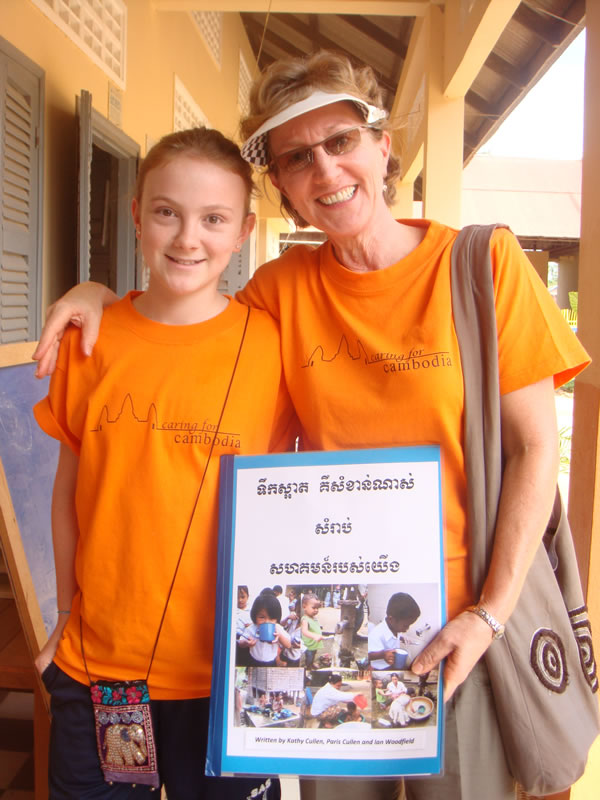 |
| My daughter and I jointly wrote a book for CFC. |
Throughout the long weekend, we'd teach the students the lessons we had created while the Cambodian teachers observed us. Then, we'd teach it again to the Cambodian teachers as if they were the students. The next day, we watched them teach the same lesson to a different group of students. All were communicated through Khmer translators.
The first year I went to Siem Reap, we focused on asking questions to get kids thinking. When I was teaching a lesson and wanted to emphasize that it was thinking time, I'd put my two fingers to my temple. When I saw my Cambodian teaching partner tap her temple while conducting the Khmer lesson, I knew she understood. An unforgettable moment that made it all worthwhile.
Exploring
 |
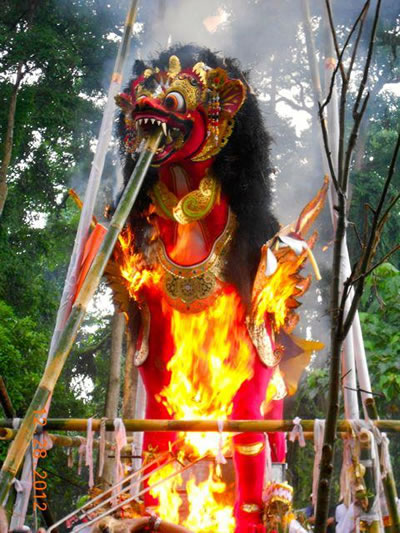 |
|
Before… and during a village cremation ritual in Bali.
|
Travel is a big part of our international way of life. Singapore is a great jumping-off point for exploration. We visited ancient temples in Cambodia, witnessed a cremation ceremony in Bali, and watched talented artists at work in Vietnam. With four national languages, many cultures are honored in Singapore, so the holidays were numerous. Chinese New Year is at the end of January, Muslim Ramadan is in June, and Indian Deepavali is in October. And all the traditional American holidays as well.
Before each long break, I'd sit my students in a circle and ask where they were going. Paris, Seoul, and New Delhi were standard replies. The worldliness of the students was a part of what I loved about my job. Though most held American passports, many nationalities were in my classroom, including Indian, Japanese, and European.
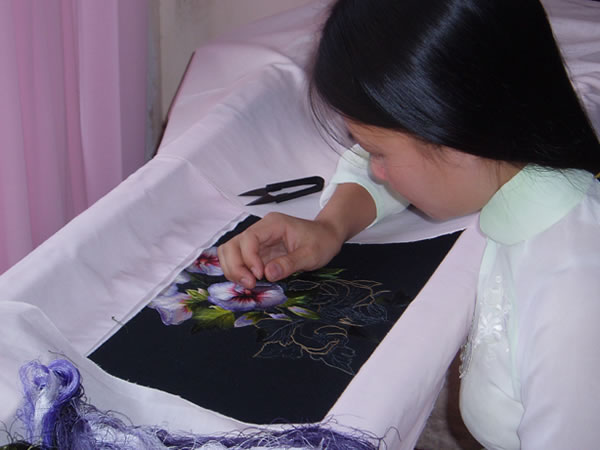 |
| A talented artist in Ho Chi Minh City, Vietnam. |
Equatorial Sun
The most significant adjustment to living in the tropics was the heat. Singapore lies one degree north of the equator, and although locals might claim there are seasons, the climate doesn't change much. It is hot, wet, and sticky year-round, often in the 90s, with 95% humidity during the day. It cools down at night, but it never gets cold. Most of us slept with the air conditioning on, windows wide open, and fans blowing.
Sundays were our family scouting days. We'd explore a new part of the island each weekend. We'd start with three or four things on a list — the Bird Park, train to lunch, taxi to the beach on Sentosa Island — and never manage to get to them all.
We learned to surrender to the heat. There was comfort in remembering I could always shower when I got home. Rivers of sweat ran down our backs. With pink cheeks and drained energy, we'd often change our plans and head home. Our lists often shrank to just one activity because we melted in the equatorial sun.
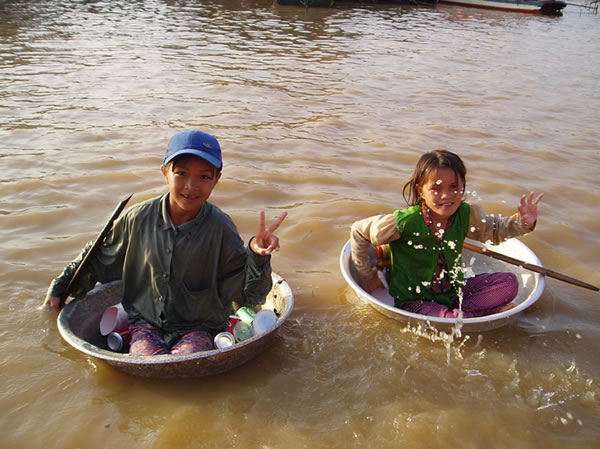 |
Industrious kids collecting plastic and cans on the Mekong River. |
Cultural Differences
Many Singaporeans and expat families had a full-time, live-in maid. At first, I saw no need to hire someone to do our chores. With a grocery store, ATM machine, and hawker stalls — essentially a food court — right across the street, who needed help? I'm unsure if it was the long hours, the heat, or the intense pace, but I eventually changed my mind.
Having someone live with us and work for us was another adjustment. At first, I invited Cora to dine with us, but she never did. That just wasn't how things were done. Cora was Filipino and left her three kids home, searching for a higher-paying job. I paid her $500/month plus room and board. As part of our contract, I'd fly her back to her home every two years. College graduates often leave the Philippines for better employment. Wise and hardworking, she was part of why living in Singapore was such a sweet deal.
Lessons Learned
Living abroad changed me. I'm more tolerant of others and myself, compassionate, and curious due to my travels. And so are my kids. We learned a fundamental lesson: the American way isn't the only way. A thousand paths lead to a good life.
The world awaits. I recommend going all in.
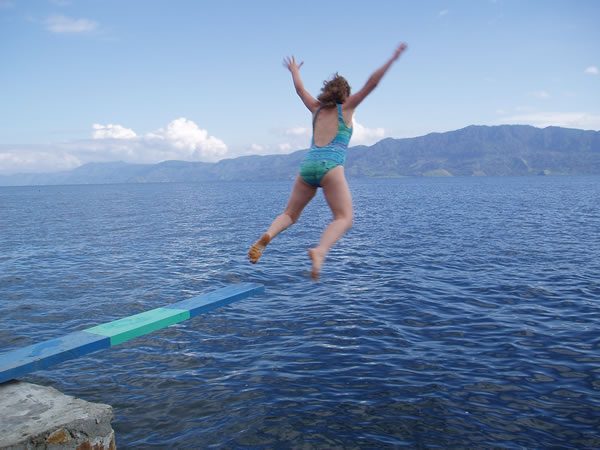 |
Lake Toba, Indonesia. |
|
Kathryn Cullen is back in Carlsbad, California, after 10 years abroad. She belongs to the North County Writer's Bloc. She keeps her eyes wide open, so she never runs out of subjects to write about — travel, outrigger canoeing, aging parents, truth, taking risks, and adults still growing up.
|
|
